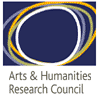Primary Source Material
Bayeux Tapestry
At over 230 feet in length, the Bayeux Tapestry (or more correctly, Bayeux Embroidery) is a unique source that presents a detailed and almost contemporary narrative of the immediate circumstances of the Conquest in a visual format. It also displays many aspects of medieval life in general, including craft and agricultural techniques, civil and military costume, and the art of war.
However, while the value of this source is clear, its meaning and circumstances of its creation are more problematic. For instance, While it corroborates the textual sources in some respects, it can also contradict them. There have also been long-standing debates about when, where, for whom, and why it was created, whether or not it reflects a exclusively Norman view point of the Conquest, or whether there are pro-Anglo-Saxon elements within it.
While Odo , Bishop of Bayeux and half brother to the Conqueror remains the favoured canditate for patron, there have been challenges to the long-established view that it was created in England. Dating, meanhile, has ranged from a couple of years after the conquest to well into the 1080s.
The original tapestry is on display in Bayeux, Normandy, but a replica is on display at Reading Museum. The bayeux tapestry website allows you to view the tapestry scene by scene. The are also teaching and learning materials available to download.
An animated version of the tapestry is available here.
Bibliography
P. Bouet, B. Levy and F. Neveux (eds.), The Bayeux Tapestry: Embroidering the Facts of History, Proceedings of the Cerisy Colloquium, 1999, (2004)
Domesday
Domesday Book is a detailed survey of the land held by William the Conqueror and his people. Find out more about Domesday Book at The National Archives.
Magna Carta
Examine the original copy at the British Library close up, along with a translation and commentary by the curator.
Charters
You can now download images of over 2500 seals for free from The National Archives. They also offer a workshop for schools looking at how seals were made and why they were used.
Illuminated Manuscripts
Psalters were collections of psalms (songs from the Old Testament) and prayers, bound together with other devotional material such as a liturgial calendar and litany of saints. Many psalters were richly illuminated, often with illustrations. The Luttrell Psalter is particularly special for it contains an unusally large number of illustrations detialing ordinary life.
The extent of illumination could be even greater in books of hours, which became more popular than psalters in the later Middle Ages.
Maps
Medieval mappae mundi, 'maps of the world', were not intended to be used as navigational charts. Schematic in design, these maps instead offer a view of the medieval world, its beliefs and politics.
The British Library brought together some of the best examples of medieval maps in its 2010 exhibition, 'Magnificent Maps'.
The Hereford Mappa Mundi is the largest map to have survived. Created in the late thirteenth century, it offers a summary of the medieval world and everything in it. Centred on Jerusalem, the map includes places in the known world and the creatures that inhabited the unknown world. The Hereford map featured on the BBC Four documentary 'The Beauty of Maps'. The series website includes resources for teachers.
Medieval town plans can be studied and compared through the maps produced by cartographer, John Speed (1552–1629)
Home | Project Aims | Research Team | Events | Norman Studies | Schools | Contacts | Links |

